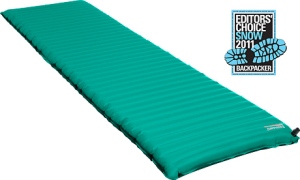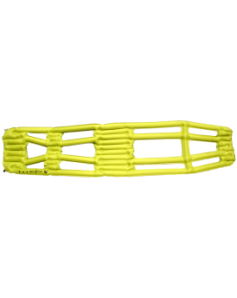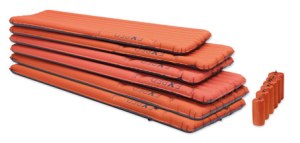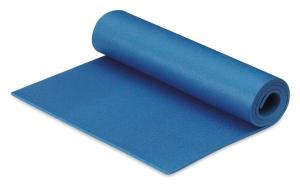We use a sleepmat for two reasons; to provide some cushioning from the uneven and hard ground and to provide insulation to keep us warm. When we lie in our sleeping bag the insulation becomes compressed under us and so we find cold spots developing where this is happening. Sleep mats come in many shapes and sizes but can basically be separated into 3 types: Foam mats, air mats and insulated mats. We will look at each in turn examining the pros and cons of each but before we do that lets just consider how we measure how much insulation we are getting. The insulation that a mat gives is denoted buy its R value.
R value is a measure of the thermal resistance of a material or product. For sleepmats the typical range is from 1-8 with 8 being the warmest.
Foam mats
Foam mats were the standard sleepmat for years, they are cheap, robust, cant leak or deflate and make from a dense closed cell foam. Typical R values are around 1 or 2 depending on the thickness of the foam. Some are shaped like the z rest from Thermarest to trap a layer of air to boost insulation. The downsides to the foam mat are that they are bulky, thin and comparatively not very warm or comfortable. They work great as an additional layer under an insulated mat for winter camping as they will provide some insulation should your other mat deflate, and will boost the insulation provided by your other mat. Sleeping on a foam mat will also allow you to appreciate the benefits of the other forms of mat!
Air Mats
Air mats vary from the large bed like mats sold for car camping through to the ultralightweight backpacking mats form the likes of Cascades designs, Exped and Klymit. The larger car camping mats are too heavy and bulky for lightweight use and can be very cold to sleep on if the night time temperatures tend to be cool.

The lightweight mats tend to have an R value of 1.5-5 which they achieve through the clever use of baffling to provide air pockets and the use of reflective materials on the inside designed to reflect heat back up to the sleeper instead of allowing it to be conducted away by the cold ground. Or, as in the Klymit, they cut away parts of the mat to allow for loft pockets where the sleeping bag can maintain its loft and insulative properties where it is not being compressed by the body.
The advantages of the airmats are that they are generally the smallest packing of the sleep mats as well as the lightest.

The Klymit inertia mat weighs only 9 oz and packs down to 6” x 3”
Disadvantages are that they are not as thick or cushioning as insulated mats and they are susceptible to punctures meaning that greater care has to be taken when using them. They are not as warm as the warmest insulated mats.
Insulated mats.
These provided the first alternative to foam mats when the early Thermarest mats appeared. They use an open cell foam enclosed within an airtight membrane to allow for greater cushioning, and reduced compression when the mat is inflated. This technology allowed the mats to become much smaller when packed away and allowed for greater insulation and higher R values.
This type of mat typically has an R value of between 2 and 4 and is perfect for 3 season camping trips at relatively low altitudes.

As development of insulated mats progressed we find the open cell foam being replaced by other materials more typically found in sleeping bags. So the mats from Exped and Klymit use synthetic insulating materials or down to produce the thickest , warmest mats available. These mats are up to 2.5” thick and typically have R values in the range of 4-8 making them perfect for winter camping or for those people who want the warmest most cushioned sleep they can in a lightweight mat.

The downside to the insulated mats is that they are bulkier and heavier than air mats and also have the drawback that they can be punctured. They are also the most expensive to purchase.
Care of Mats
When travelling with a mat store it inside your pack, except closed cell mats which are too bulky. Make sure that you have a puncture repair kit for your mat, if applicable. Most mats can be cleaned with a mild detergent solution. Try to avoid using the mat outside the tent as this is when most punctures occur.
It is worth taking time to consider which mat best fits your needs as these mats will last a long time, I have 30+ year old foam mats and 25+ year old thermarests that are still perfectly usable and I am sure I will still be using my exped mats in 20 years time unless something even better comes along!

